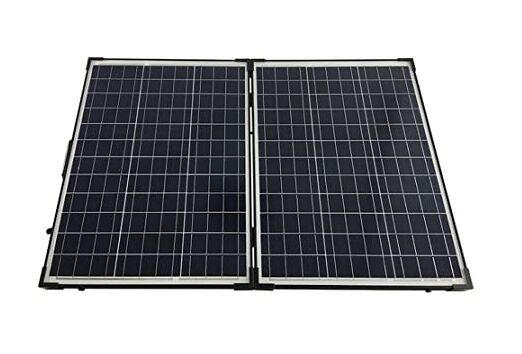Solar modules (SolarModule) are also called solar photovoltaic modules, usually also referred to as panels or photovoltaic modules. The solar cell module is a product in which multiple single solar cells are connected in series and parallel as required, and packaged through special materials and special production processes.
According to the battery technology route, it is mainly divided into crystalline silicon batteries, a thin-film battery, and a concentrating battery. Monocrystalline and polycrystalline are the two brothers on the technical route of crystalline silicon batteries, which are distinguished by different lattice arrangements.
Photovoltaic glass: The panel glass used in the battery module is low-iron super white suede tempered glass. Low iron super white means that the iron content of this glass is lower than that of ordinary glass, thereby increasing the light transmittance of the glass. At the same time, viewed from the edge of the glass, this glass is whiter than ordinary glass, which is greenish from the edge.

The toughening treatment is to increase the strength of the glass, resist the impact of wind, sand, and hail, and play a long-term role in protecting solar cells. After tempering the panel glass, the strength of the glass can be 3 to 4 times higher than that of ordinary glass.
EVA film: a copolymer of ethylene and vinyl acetate. It is a thermosetting film-like hot melt adhesive and is currently a commonly used bonding material in solar cell module packaging. Two layers of EVA film should be added to the solar cell module. The two layers of EVA film are sandwiched between the panel glass, the cell sheet, and the TPT back sheet film to bond the glass, cell sheet, and TPT together. It can increase the light transmittance of the glass after being bonded to the glass, play an anti-reflection effect, and have again effect on the power output of the solar cell module.
Backsheet material: The back sheet material of the solar cell module can have a variety of options according to the requirements of the solar cell module. Generally, there are tempered glass, plexiglass, aluminum alloy, TPT composite film, and so on. The tempered glass backsheet is mainly used to make double-sided light-transmitting building material solar cell modules, which are used for photovoltaic curtain walls, photovoltaic roofs, etc., which are expensive and heavy.
TPT composite film has the characteristics of airtightness, good strength, good weather resistance, long service life, no change under the lamination temperature, and strong combination with bonding materials. These characteristics are suitable for encapsulating solar cell modules. As the back sheet material of the cell modules, it effectively prevents the erosion and influence of various media, especially water, oxygen, and corrosive gases on EVA and solar cells.
These composite films also have the characteristics of high strength, flame retardancy, durability, self-cleaning, etc. The white composite film can also reflect sunlight, improve the conversion efficiency of battery modules, and also have a strong reflection of infrared rays, which can reduce battery components. The working temperature in strong sunlight.
Junction box and bypass diode: The special junction box for solar cell modules is the component that connects the internal output circuit of the battery module with the external circuit. The positive and negative bus bars drawn from the battery panel enter the junction box, plug or solder to the wiring At corresponding positions in the box, the outer leads are also connected to the junction box by methods such as plugging, welding, and screw crimping. In the junction box, there is a place for the bypass diode to be installed, or the bypass diode is directly installed.
When there are more solar cell modules connected in series to form a square cell array or a branch of a square cell array, diodes need to be connected in reverse parallel at the positive and negative output terminals of each battery panel. The diodes connected in parallel at both ends of the module are called side-by-side. Road diode.
The function of the bypass diode is to prevent a certain component in the square array string or a certain part of the component from being shaded or malfunctioning to stop power generation. A forward bias will be formed at both ends of the component bypass diode to make the diode conduct(intelligent solar charge controller). The working current of the component string bypasses the faulty component and flows through the diode bypass, which does not affect the power generation of other normal components. At the same time, it also protects the bypassed component from high forward bias or damage due to "hot spot effect" heating.
Crystalline silicon solar cells are divided into monocrystalline silicon cells and polycrystalline silicon cells. There is a blue anti-reflection film on the surface of the cell and silver-white electrode grid lines. Many of the thin grid lines are the leads from the surface electrodes of the cell to the main grid lines. The two wider silver-white wires are the main grid lines, also called electrode lines or upper electrodes.
There are also two silver-white busbars on the back of the cell, called the bottom electrode or the back electrode. The connection between the solar cell and the solar cell is realized by welding the interconnection bar to the main grid line. Generally, the electrode wire on the front is the negative wire of the battery, and the electrode wire on the back is the positive wire of the battery. The area of the cell is proportional to the output current and power generation. The larger the area, the greater the output current and power generation.